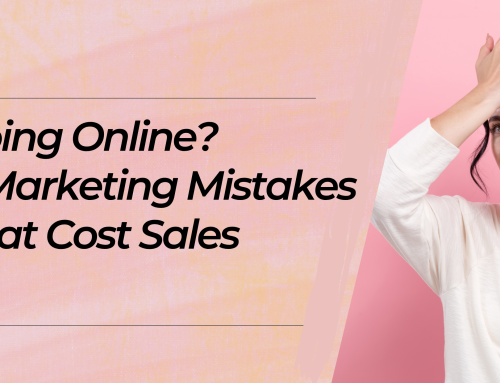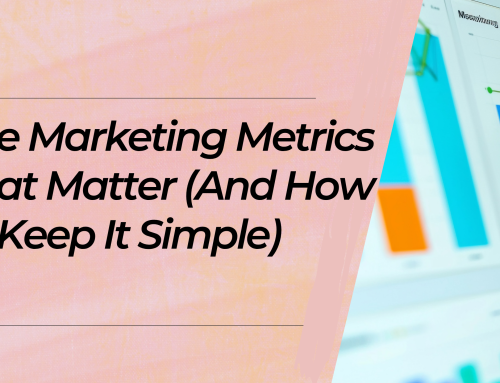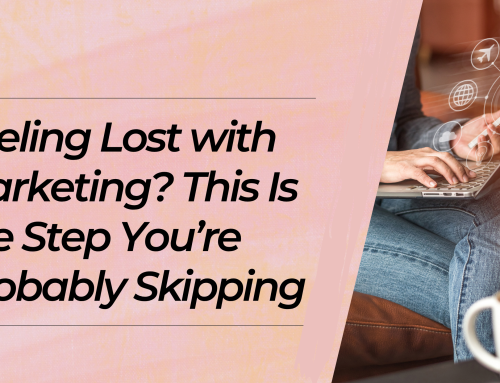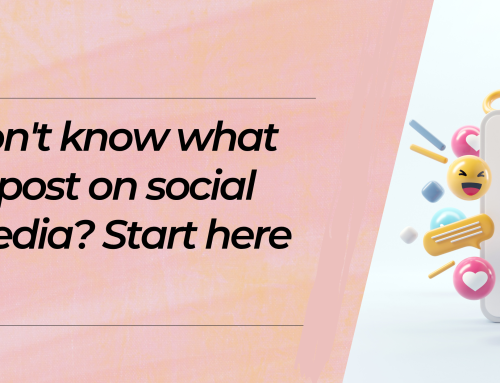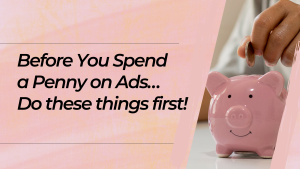 A Smarter Way to Make Every Pound Work Harder
A Smarter Way to Make Every Pound Work Harder
Running ads can feel like an exciting next step for your business. It’s tempting to think, “Once I start advertising, the sales will roll in.”
But here’s the truth: ads don’t fix marketing problems — they amplify what’s already there. If your branding, customer journey, or offer aren’t set up properly, ads will simply shine a spotlight on the cracks. And that usually means wasted budget and disappointment.
Before you spend a single pound on ads, it’s worth getting your “house” in order. When the foundations are strong, ads can become a powerful amplifier. When they’re not, they can drain your budget fast.
Why Running Ads Too Soon Wastes Money
Many small businesses run ads as a shortcut, hoping they’ll make everything work overnight. But if the basics aren’t in place, this usually leads to:
-
Clicks with no conversions
-
Cold traffic bouncing straight away
-
Low trust and credibility issues
-
Budget disappearing without results
Ads don’t build trust. They don’t create a customer journey. They don’t make a messy offer suddenly clear. They simply bring more eyes to what you’ve already built—and if what’s there isn’t ready, people leave as quickly as they arrived.
Step 1 — Map Out Your Customer Journey
Before you invite new traffic in, you need to know where they’re going. A simple customer journey looks like this:
Awareness → Consideration → Conversion → Loyalty
Think about how someone moves from discovering you, to trusting you, to buying from you, and finally becoming a loyal customer.
Make sure this journey exists organically first before you layer ads on top. That means:
-
You have your content pillars defined and are posting around clear themes.
-
There’s some trust-building content available (blogs, posts, videos, testimonials).
-
You know what the next step is at each stage of the journey.
When your journey flows naturally, ads can plug into it. If it’s missing, ads lead people to a dead end.
Step 2 — Make Sure Your Branding Basics Are in Place
Before running ads, it’s essential that your online presence looks consistent and trustworthy. When someone clicks an ad, the first thing they do—often subconsciously—is check whether they’ve landed in the right place.
If your branding looks mismatched or unfinished, they might assume the link is broken or unsafe and close the page. That’s wasted ad spend.
Here’s what to check:
-
✅ Profile photos and cover images match your brand across platforms.
-
✅ Your brand colours are chosen and used consistently on your website and social media.
-
✅ Your logo or core visual elements are visible and recognisable.
-
✅ All your platforms are set up and claimed (e.g. Instagram, Facebook, LinkedIn, website).
-
✅ You’ve claimed your vanity URLs/handles where possible (e.g. facebook.com/yourbrandname).
Ask yourself:
If someone clicks my ad and lands on my page or website, is the imagery and branding consistent enough for them to know instantly they’re in the right place?
If not, tidy this up first. A few quick tweaks now can save you from losing clicks and wasting money later.
Step 3 — Get Your Offer Ready to Sell
If someone clicks and decides they want to buy, your offer must be ready. Sending paid traffic to something half-built or unclear is one of the fastest ways to lose money.
Check that:
-
Your product or service is clearly explained.
-
The value and pricing are obvious.
-
People know exactly what action to take next.
-
Your checkout or enquiry process works smoothly from start to finish.
Ads can’t fix a vague offer. Make sure the “shop” is ready before you send people in.
Step 4 — Build and Test Your Funnel
Even a simple funnel—like a landing page → email sequence → offer—needs to work end to end.
Before paying for ads, test it organically to make sure:
-
The landing page loads quickly and matches the ad message.
-
The CTA is clear and leads to the right place.
-
Any sign-up or checkout process is easy to follow.
-
Tracking (Google Analytics, Meta Pixel, etc.) is installed correctly.
Think of ads as traffic and your funnel as the road. If the road is broken, more traffic won’t help.
Step 5 — Set Up Your Email Sequences
This is where so many businesses lose potential customers. Even if someone doesn’t buy immediately, a good email sequence nurtures the relationship and turns interest into sales.
For lead magnets (new subscribers):
-
Welcome email: Deliver the freebie and introduce yourself.
-
Nurture sequence (2–4 emails): Share valuable tips, stories, or insights that build trust.
-
Offer email: Introduce your product or service once they’ve got to know you.
For customers (after a purchase):
-
Thank-you / Confirmation: Reassure and set expectations.
-
Onboarding / How-to: Help them get the most out of their purchase.
-
Upsell / Cross-sell (optional): Offer something relevant once they’re happy.
-
Review / Testimonial request: Gather social proof once their experience is complete.
Having these sequences automated means you make the most of every click—whether they convert straight away or not.
Step 6 — Ensure Your Online Presence Feels “Lived In”
People often click an ad and then check out your website, social media, or reviews before taking action.
Ask yourself:
-
Is your website up to date?
-
Do your socials reflect your brand consistently?
-
Is there some organic content visible that builds trust?
This doesn’t mean you need hundreds of posts—just enough to show you’re real, active, and trustworthy.
Step 7 — Add Social Proof and Trust Signals
Social proof builds confidence fast. This can include:
-
Testimonials or reviews
-
Star ratings
-
“As seen in” logos or media mentions
-
Case studies or before-and-after examples
Sprinkle these across key touchpoints—especially landing pages.
Step 8 — Check Your Tech and Operations
Before sending a wave of new traffic your way, make sure your systems can handle it:
-
Checkout and enquiry forms work correctly.
-
Emails are sending as expected.
-
Someone is available to respond to questions if needed.
There’s nothing worse than paying for traffic you can’t serve properly.
Step 9 — Get Clear on Your Goal and Budget
Finally, be clear on what you want your ads to achieve. Are they for:
-
Awareness (traffic and reach)?
-
Lead generation?
-
Direct sales?
Set realistic expectations for your initial budget—especially if you’re testing. Ads are not magic taps; they’re tools that work best when plugged into a solid strategy.
Signs Your House Is Ready (Quick Checklist)
-
✅ My customer journey is mapped and tested
-
✅ My branding is consistent across platforms
-
✅ My offer is ready to sell
-
✅ My funnel works smoothly
-
✅ My email sequences are set up
-
✅ My online presence builds trust
-
✅ I have social proof in place
-
✅ My systems can handle traffic
-
✅ I know what I want ads to achieve
If you can tick most of these off, you’re in a strong position to make ads work for you—not against you.
To wrap it up…
Running ads without the right foundations in place is like arriving at a hotel for a family holiday only to find it hasn’t been built yet — it’s confusing, messy, and usually ends up costing you far more than planned.
Take the time to set up your journey, branding, offer, funnel, email sequences, and presence properly. This turns ads into a smart amplifier instead of a money drain.
👉 If this helped, check out my other blogs on content pillars, simple marketing metrics, and beginner strategies to build a business that lasts.
